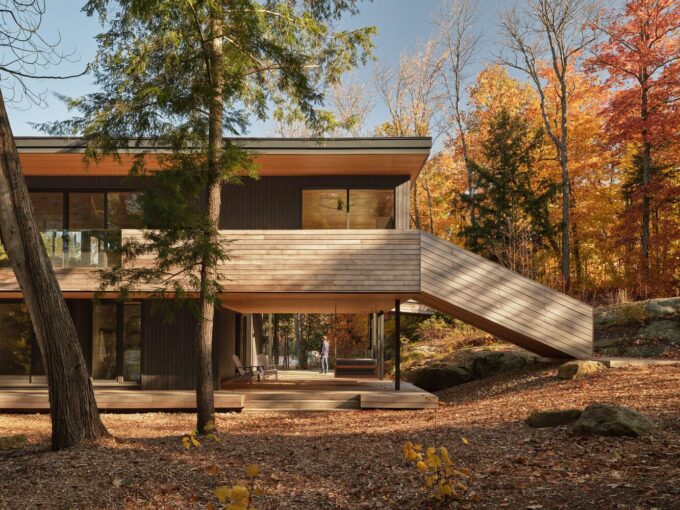- Home
- Articles
- Architectural Portfolio
- Architectral Presentation
- Inspirational Stories
- Architecture News
- Visualization
- BIM Industry
- Facade Design
- Parametric Design
- Career
- Landscape Architecture
- Construction
- Artificial Intelligence
- Sketching
- Design Softwares
- Diagrams
- Writing
- Architectural Tips
- Sustainability
- Courses
- Concept
- Technology
- History & Heritage
- Future of Architecture
- Guides & How-To
- Art & Culture
- Projects
- Interior Design
- Competitions
- Jobs
- Store
- Tools
- More
- Home
- Articles
- Architectural Portfolio
- Architectral Presentation
- Inspirational Stories
- Architecture News
- Visualization
- BIM Industry
- Facade Design
- Parametric Design
- Career
- Landscape Architecture
- Construction
- Artificial Intelligence
- Sketching
- Design Softwares
- Diagrams
- Writing
- Architectural Tips
- Sustainability
- Courses
- Concept
- Technology
- History & Heritage
- Future of Architecture
- Guides & How-To
- Art & Culture
- Projects
- Interior Design
- Competitions
- Jobs
- Store
- Tools
- More
Essential Architectural Abbreviations for Clear Communication in Design and Construction
Discover the crucial role of architectural abbreviations in enhancing communication and collaboration within the design and construction industry. This article delves into how shorthand notations streamline discussions, minimize misunderstandings, and improve workflow among architects, engineers, and contractors.

In the world of architecture, communication is key. We often find ourselves navigating a landscape filled with technical jargon and specific terminology. That’s where architectural abbreviations come into play. These shorthand notations not only streamline our discussions but also enhance our understanding of complex concepts.
Whether we’re drafting plans or collaborating with engineers and contractors, knowing these abbreviations is essential. They save time and reduce the likelihood of miscommunication, making our projects run more smoothly. Join us as we explore the most common architectural abbreviations and their significance in the field, ensuring we’re all on the same page in our architectural endeavors.

Table of Contents
ToggleUnderstanding Architectural Abbreviations
Architectural abbreviations play a crucial role in our profession. They enable us to communicate effectively, improve workflow, and reduce misunderstandings in design and construction.

Importance in Architectural Design
Architectural abbreviations simplify complex terminology, making it easier for us to convey detailed information quickly. They enhance clarity in drawings and documents, allowing for a concise representation of ideas. By using established abbreviations, we promote consistency across projects, which aids in collaboration among teams and disciplines. This consistency helps us efficiently manage time and resources, reducing the risk of errors during the design and construction phases.
Common Usage in the Industry
Architectural abbreviations find application throughout various stages of projects. In drawings, we frequently see notations like “N.,” indicating north, and “R.O.,” representing rough opening. Specifications also utilize terms like “GWB” for gypsum wallboard and “CMU” for concrete masonry unit. We often encounter abbreviations in communications, such as “CAD” for computer-aided design and “LEED” for Leadership in Energy and Environmental Design. Understanding these terms helps us navigate documents and conversations, fostering effective collaboration and project execution.
Types of Architectural Abbreviations
Architectural abbreviations categorize broadly into standard and specialized types, each serving specific purposes in communication and documentation.

Standard Abbreviations
Standard abbreviations feature commonly used terms in architectural documents. These abbreviations provide clarity and enhance efficiency across various projects. Some frequently encountered standard abbreviations include:
- N.: Represents north, crucial for site plans and orientation.
- F.F.: Denotes finished floor, indicating the final floor height in designs.
- R.O.: Stands for rough opening, a measurement for door and window placements.
- GWB: Means gypsum wallboard, a key material in construction.
- C.L.: Refers to centerline, used extensively for alignment and layout.
These abbreviations simplify communication, ensuring all team members understand critical elements without lengthy explanations.
Specialized Abbreviations
Specialized abbreviations cater to specific fields within architecture, such as structural engineering, landscape design, or interior architecture. These abbreviations may not be universally recognized but are essential within certain contexts. Examples include:
- M.E.P.: Stands for mechanical, electrical, and plumbing, indicating systems integral to building functionality.
- E.W.: Refers to exterior wall, specifying construction elements during design discussions.
- D.G.: Denotes drainage grade, often crucial in landscape architecture and site design.
- A.V.: Stands for audio-visual, important in designing spaces such as auditoriums and meeting rooms.
Understanding specialized abbreviations allows professionals to communicate effectively within their respective domains, facilitating collaboration on complex projects.
Examples of Architectural Abbreviations
Architectural abbreviations serve a vital role in enhancing clarity and efficiency in our communication. Below are some common abbreviations categorized by materials and measurements.

Abbreviations for Materials
Architects frequently use specific abbreviations to reference materials, promoting consistency across projects. Here are notable examples:
- GWB: Gypsum Wallboard
- CMU: Concrete Masonry Unit
- STC: Sound Transmission Class
- CPVC: Chlorinated Polyvinyl Chloride
- HSS: Hollow Structural Section
Abbreviations for Measurements
Accurate measurements are crucial in architectural designs. Understanding these measurement abbreviations helps maintain precision throughout projects. Here are essential abbreviations:
- FF: Finished Floor
- N.T.S.: Not to Scale
- R.O.: Rough Opening
- D.L.: Design Level
- W.L.: Water Level
These abbreviations streamline our documentation processes and facilitate better collaboration among teams in architectural projects.
The Role of Architectural Abbreviations in Communication
Architectural abbreviations significantly enhance communication among professionals in the field. By incorporating these shorthand notations into technical discussions and documents, we create a more efficient workflow.

Enhancing Clarity in Technical Drawings
Architectural abbreviations simplify complex terminology in technical drawings. For example, using “FF” for Finished Floor or “R.O.” for Rough Opening allows us to convey vital information without lengthy explanations. These abbreviations promote clearer communication, reducing the likelihood of misunderstandings in critical design elements. Efficient representation of information ensures that all project stakeholders can interpret drawings accurately, leading to effective decision-making.
Streamlining Collaborative Efforts
Architectural abbreviations facilitate smoother collaboration among architects, engineers, and contractors. When we utilize standard terms like “M.E.P.” for mechanical, electrical, and plumbing systems, it ensures all team members understand their roles and responsibilities. This common language minimizes the time spent on clarifications, fostering a more dynamic exchange of ideas. As a result, teams can focus on creative solutions rather than deciphering complex terminology, leading to better project outcomes.
Conclusion
Architectural abbreviations play a vital role in our industry by streamlining communication and enhancing understanding among professionals. By utilizing these shorthand notations, we effectively navigate complex concepts, saving time while reducing the potential for misunderstandings.
Commonly used abbreviations, such as “N.” for north and “GWB” for gypsum wallboard, simplify discussions during various project stages. These notations create a common language that facilitates collaboration between architects, engineers, and contractors.
Our categorized approach to architectural abbreviations highlights the distinction between standard terms (like “F.F.” for finished floor) and specialized terms (such as “M.E.P.” for mechanical, electrical, and plumbing). By knowing both categories, we ensure clarity and efficiency in architectural documentation.
We emphasize the significance of material and measurement abbreviations in our day-to-day activities. Notable examples, such as CMU (Concrete Masonry Unit) and R.O. (Rough Opening), enhance our ability to convey essential information quickly and accurately.
Using architectural abbreviations allows us to maintain a dynamic workflow, promoting effective exchanges of ideas and facilitating better collaboration among team members. This leads us to focus on innovative solutions, ultimately driving successful project outcomes.
- architectural abbreviations
- architectural drafting abbreviations
- Architectural Drawing Symbols
- architectural language
- architecture notation
- blueprint abbreviations
- building plan abbreviations
- common architecture acronyms
- construction abbreviations
- construction blueprint symbols
- construction document abbreviations
- construction industry jargon
- design and construction terminology
- engineering abbreviations in architecture
- essential abbreviations in architecture
- key abbreviations in architecture
- project documentation abbreviations
- site plan abbreviations
- standard architectural terms
- technical terms in architecture
I create and manage digital content for architecture-focused platforms, specializing in blog writing, short-form video editing, visual content production, and social media coordination. With a strong background in project and team management, I bring structure and creativity to every stage of content production. My skills in marketing, visual design, and strategic planning enable me to deliver impactful, brand-aligned results.
Submit your architectural projects
Follow these steps for submission your project. Submission FormLatest Posts
The Ultimate Guide to Fencing in North Dakota: Choosing the Best Fence for Your Property
Watching a chain link fence twist in 70 mph winds near Minot...
Gaudí: Where Architecture Meets Science
Gaudí: Where Architecture Meets Science shows catenary arches, ruled surfaces, and biomimicry...
How Housing Market Forces Shape Architectural Design Today
Architecture never exists in isolation. Buildings rise from a mix of ambition,...
Why Portable Formaldehyde Gas Detectors Matter on Construction Sites
As construction practices shift toward more enclosed and material-intensive environments, the risk...












Leave a comment